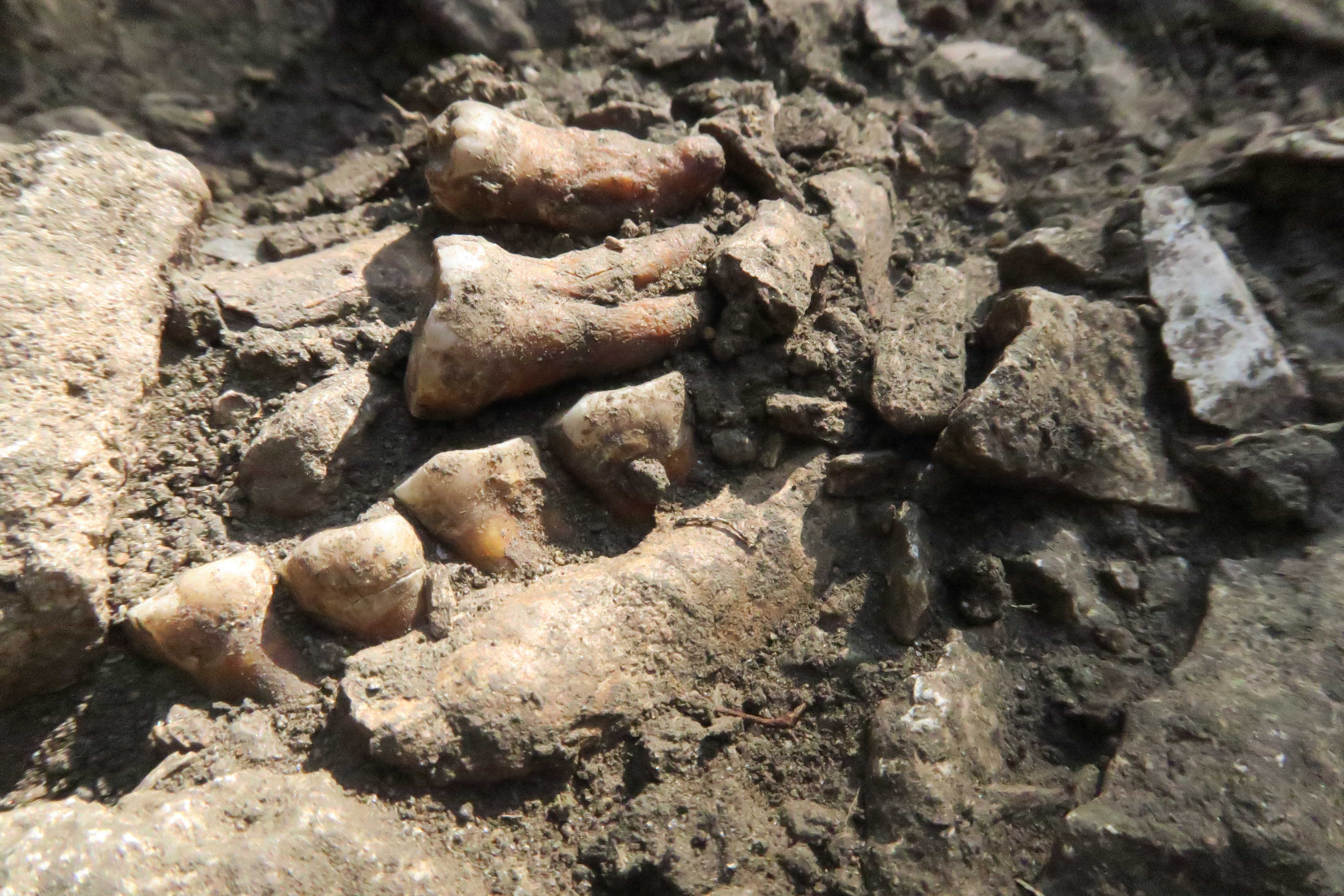Ancient DNA Reveals Neanderthal Group Was Isolated for 50,000 Years
A new study, based on the remains of a Neanderthal nicknamed Thorin, is shaking up what archaeologists long thought about these early humans in Europe

In 2015, archaeologists discovered the remains of a Neanderthal in a cave in southern France. They nicknamed him “Thorin” after a dwarf character from J.R.R. Tolkien’s The Hobbit.
For the last nine years, researchers have been painstakingly excavating Thorin’s teeth and bones at the site, called Grotte Mandrin. Now, a new analysis of Thorin’s ancient DNA suggests he belonged to a previously unknown lineage of Neanderthals that was isolated for 50,000 years, despite the fact that other members of their species were close by.
Researchers detailed their findings Wednesday in a new paper published in the journal Cell Genomics.
To learn more about Thorin, scientists used a fragment of a root from one of his fossilized molars. This sample allowed them to generate a whole-genome sequence, which revealed evidence of recent inbreeding.
Thorin belonged to a small group of Neanderthals who lived between 42,000 and 50,000 years ago. He seems to have lived at the more recent end of that window, but his DNA is similar to a much older group that diverged from the main Neanderthal population around 105,000 years ago. After separating from other Neanderthals, the evidence suggests that group remained isolated for the next 50,000 years.
This discovery raises new questions. Why was this group cut off from other Neanderthals? And did their separation ultimately contribute to the species’ extinction some 40,000 years ago?
“How can we imagine populations that lived for 50 millennia in isolation while they are only two weeks’ walk from each other?” says study co-author Ludovic Slimak, an archaeologist at France’s National Center for Scientific Research and Paul Sabatier University in Toulouse, to Live Science’s Kristina Killgrove. “All processes need to be rethought.”
Inbreeding in isolation likely would’ve made the group more vulnerable, since it “can reduce the genetic diversity over time, which in turn can have negative effects on our adaptability to changing environments,” says study co-author Tharsika Vimala, a geneticist at the University of Copenhagen, to New Scientist’s Alison George.
When Homo sapiens arrived in Europe, some interbred with Neanderthals—which is why modern humans of non-African ancestry have between 1 and 4 percent Neanderthal DNA. But researchers found no evidence that Thorin’s group had interbred with Homo sapiens at all.
The isolated Neanderthals were apparently content to stay in one place. Homo sapiens, meanwhile, were interacting and sharing knowledge.
“They were happy in their valley and did not need to move, while Homo sapiens all the time they want to explore, to see what is there after this river, after this mountain,” Slimak tells CNN’s Katie Hunt. “[We have] this need, this need to move, and this need to build a social network.”
The findings indicate that Neanderthals in Europe were not one homogenous group at the time of their extinction, but rather, at least two distinct populations. This social structure’s resulting lack of genetic diversity, coupled with the arrival of Homo sapiens, probably helped spur the Neanderthals’ demise.
“Their already small populations were losing reproductive age individuals to the other species, without any replenishment in return,” Chris Stringer, a palaeoanthropologist at London’s Natural History Museum who was not involved with the study, tells CNN. “Coupled with economic competition from the newcomers over resources, this could have been a recipe for demographic collapse.”
Additionally, the DNA analysis suggests a third “ghost” population of Neanderthals was roaming around Europe at about the same time as Thorin’s group, the study authors write for the Conversation. This population was previously unknown to scientists, and researchers hope to learn more. It even implies that perhaps other small groups of Neanderthals existed on the continent.
Taken together, the findings upend the long-held assumption that Neanderthals were all members of the same genetically similar population.
“A fascinating story then slowly begins to emerge in which Neanderthal is not a monolithic block but is represented by different populations that nevertheless developed only rare (and sometimes no) exchanges among themselves,” the researchers write in the Conversation.
/https://tf-cmsv2-smithsonianmag-media.s3.amazonaws.com/accounts/headshot/SarahKuta.png)
/https://tf-cmsv2-smithsonianmag-media.s3.amazonaws.com/accounts/headshot/SarahKuta.png)